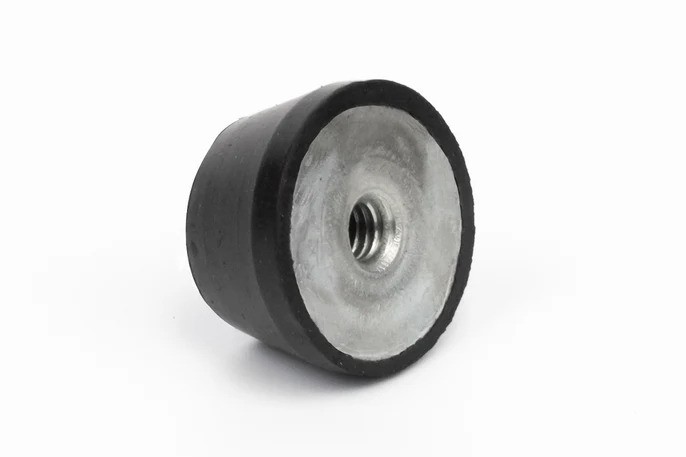 Screw in rubber feet are essential components designed to enhance stability and offer protection for a variety of applications, from furniture to machinery. By incorporating these feet, users can significantly improve the performance and lifespan of their items. This guide covers everything about screw on rubber feet, including their benefits, installation, maintenance, and expert insights.
Screw in rubber feet are essential components designed to enhance stability and offer protection for a variety of applications, from furniture to machinery. By incorporating these feet, users can significantly improve the performance and lifespan of their items. This guide covers everything about screw on rubber feet, including their benefits, installation, maintenance, and expert insights.
On This Page
Understanding Screw in Rubber Feet: Definition and Function
Screw in rubber isolation feet are specialized attachments that you can screw into the base of furniture or equipment. They provide stable footing while protecting floors from scratches and damage. Made from durable rubber or elastomer materials, these feet absorb impact, reduce vibration, and prevent slippage.
How They Work
Screw in rubber feet function by creating a larger surface area that spreads weight evenly. This helps in:
- Reducing Pressure Points: They distribute the load over a wider area, minimizing damage risks to both the furniture and the floor.
- Absorbing Vibration: The rubber material dampens vibrations, which is beneficial for appliances or machinery with significant movement.
- Preventing Slippage: The rubber provides a secure grip, reducing the chance of accidents or damage from shifting.
Variations of Rubber Feet
While this article focuses on screw in rubber feet, rubber isolation feet are another variant designed for vibration isolation. These are often used in industrial settings where machinery vibrations can lead to wear or operational issues.
Benefits of Using Screw in Rubber Feet for Stability
The advantages of screw in rubber feet are vast, making them essential in various applications. Key benefits include:
Enhanced Stability
Screw in rubber feet provide strong stability. By anchoring furniture or equipment securely, they reduce the chances of tipping or wobbling, which is crucial for tall or heavy items like cabinets or machinery.
Protection for Flooring
These feet protect floors, whether they are hardwood, tile, or carpet, from scratches and dents. They help maintain the aesthetic appeal of your flooring without damage from heavy furniture.
Vibration Dampening
Screw on rubber feet effectively dampen vibrations, especially for items like speakers, appliances, or machinery. By absorbing vibrations, rubber feet enhance equipment performance while creating a quieter environment.
Increased Durability
Designed for wear and tear, screw in rubber feet outlast traditional pads that may wear down over time. They offer a cost-effective solution in the long run.
Choosing the Right Screw in Rubber Feet for Your Project
Selecting the appropriate screw in rubber feet is crucial for optimal results. Here’s a guide to help you make an informed decision.
Consider the Load Capacity
Evaluate the weight of the item you are attaching the rubber feet to. Ensure that the rubber feet can support that weight without deforming or breaking. Manufacturers often provide load capacity information to aid in your choice.
Material Quality
Not all rubber is equal. Look for high-quality rubber or elastomer materials that offer better durability. Some rubber feet come with weather-resistant properties, beneficial for outdoor use.
Size and Shape
The size and shape of the rubber feet matter. Ensure they are proportionate to the item they will support. Larger feet provide more stability but may not fit well in tight spaces. Consider the design and dimensions of your project when choosing.
Installation Type
While this article focuses on screw in rubber feet, adhesive and snap-on options exist as well. Choose the installation method that best suits your needs.
Installation Guide: How to Properly Attach Screw in Rubber Feet
Installing screw in rubber feet is straightforward, but correct installation is essential for maximum stability and protection. Follow this step-by-step guide:
Step 1: Gather Your Tools
Before you start, gather these tools:
- Screwdriver
- Drill (if pre-drilling is needed)
- Measuring tape
- Level
- Marker or pencil
Step 2: Measure and Mark
Using the measuring tape, determine where to place the rubber feet. Mark the location with a pencil or marker for accurate placement. Position them symmetrically to maintain balance.
Step 3: Pre-Drill Holes (If Necessary)
If the rubber feet require pre-drilling, use a drill to create pilot holes where you marked the locations. This step makes it easier to screw in the rubber feet and prevents material splitting.
Step 4: Attach the Rubber Feet
Using your screwdriver or drill, securely attach the rubber feet to the furniture or equipment. Tighten adequately, but avoid over-tightening to prevent damaging the rubber.
Step 5: Level the Item
Once all feet are attached, use a level to ensure stability and balance. Adjust the feet if needed to achieve a level surface.
Step 6: Test Stability
Carefully test the item’s stability by applying pressure and checking for wobbling or movement. If everything is secure, your installation is complete!
Common Applications for Screw in Rubber Feet
Screw in rubber feet are versatile and can be applied in many areas. Here are some common uses:
Furniture
From chairs and tables to cabinets, screw in rubber feet enhance stability and protect hardwood floors while providing a non-slip surface.
Appliances
Household appliances like washing machines and refrigerators benefit from rubber feet. These feet absorb vibrations and prevent movement during operation.
Machinery
In industrial settings, screw on rubber feet are crucial for machinery that generates vibrations. They help maintain stability and protect surfaces from wear.
Electronics
For audio equipment, computers, and other electronics, rubber isolation feet reduce vibrations, improving performance and extending device lifespan.
Comparing Screw in Rubber Feet to Other Types of Furniture Pads
When considering furniture pads, compare screw in rubber feet with options like adhesive pads and felt pads.
Adhesive Pads
| Pros | Cons |
| Easy to apply | Can wear out and lose adhesion over time |
| No tools required | May not provide as much stability |
Felt Pads
| Pros | Cons |
| Soft material that protects floors | Less durable than rubber |
| Available in various shapes | Can slide or wear down quickly under weight |
Conclusion on Comparison
Screw in rubber feet offer superior stability, durability, and vibration dampening compared to adhesive and felt options. They are especially beneficial for heavy items or situations where movement occurs.
Maintenance Tips for Longevity of Screw in Rubber Feet
To ensure your screw in rubber feet last, follow these maintenance tips:
Regular Inspections
Check the rubber feet periodically for signs of wear or damage. Look for cracks, tears, or excessive wear that may reduce their effectiveness.
Clean Regularly
Dust and debris can collect on rubber feet, affecting grip and performance. Wipe them down with a damp cloth regularly to keep them clean.
Tighten as Needed
Screws may loosen over time due to movement. Periodically check the tightness of the screws and re-tighten if necessary to maintain stability.
Troubleshooting Common Issues with Screw in Rubber Feet
Even the best products can encounter issues. Here are common problems you might face with screw in rubber feet and how to resolve them:
Feet Slipping or Moving
If rubber feet are slipping, ensure they are tightened properly. If the surface underneath is too smooth, consider using additional grip pads or switching to wider rubber feet for better stability.
Wear and Tear
Rubber feet can wear out, especially in high-traffic areas. If you notice excessive wear, it may be time to replace them. Always choose high-quality rubber feet to extend their lifespan.
Noise or Vibration Issues
If equipment generates noise or vibrations despite rubber feet, ensure they are the right size and material for your application. You may need to consider additional isolation methods.

